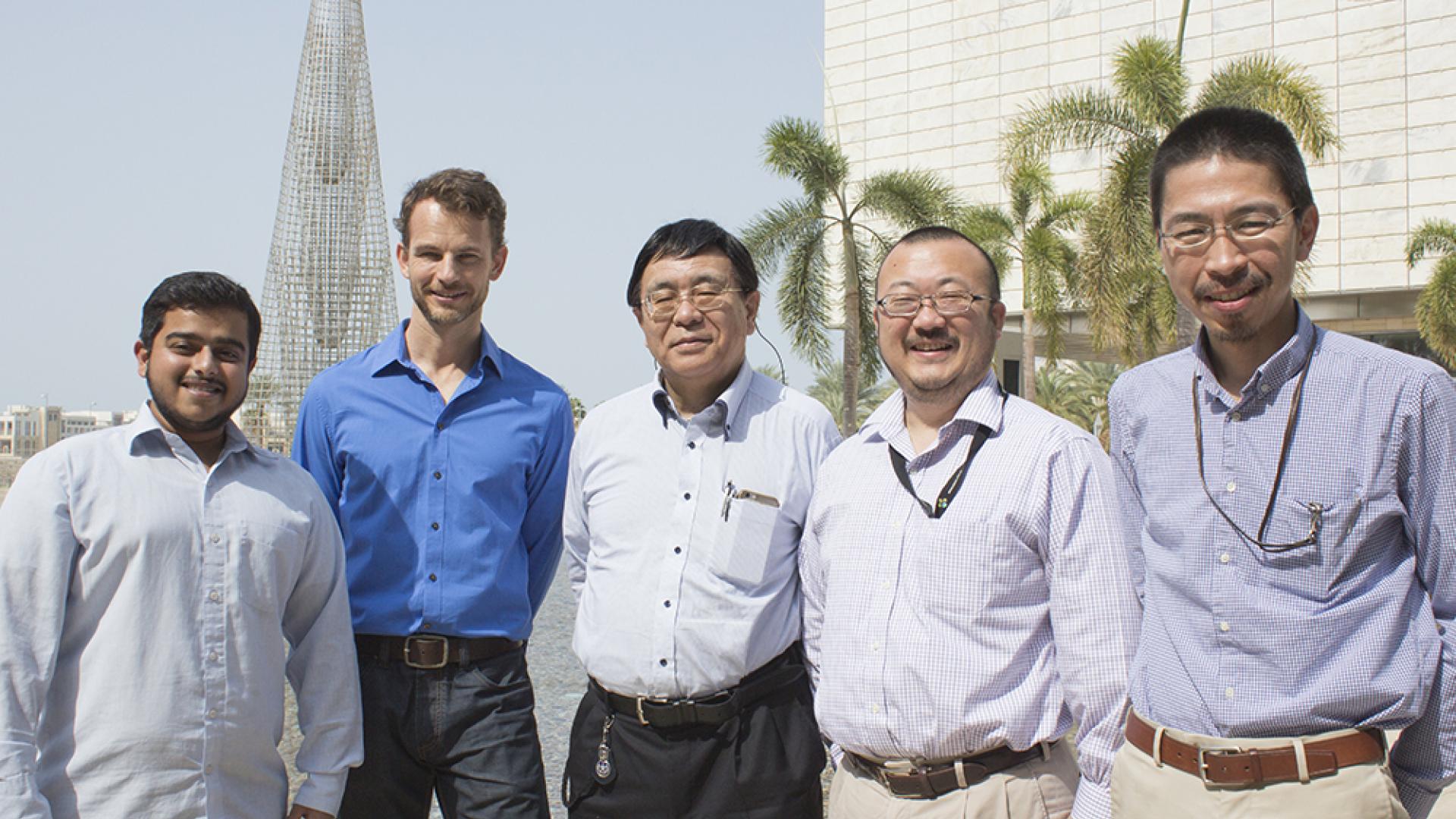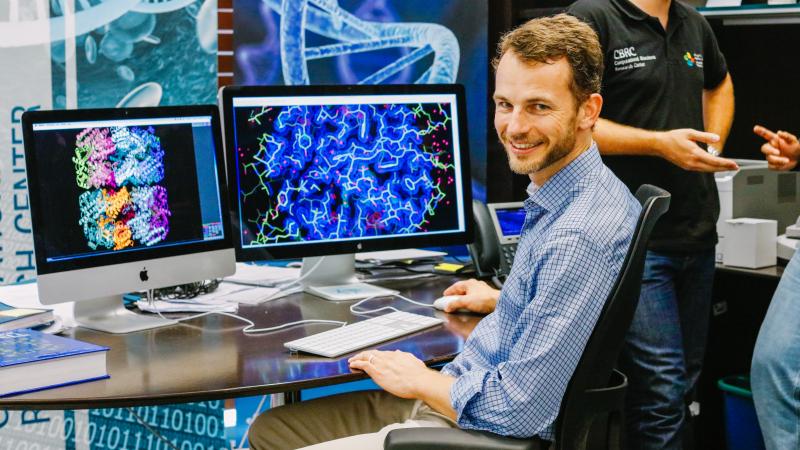-By Rose Gregorio
The groundbreaking research of Professor Mark Tester's group and fellow collaborators, "The genome of Chenopodium quinoa", published in Nature last month, revealed the first high quality reference genome sequence for quinoa. Their work opens new possibilities for scientists and breeders towards improving quality and yield of the grain, resistance to certain adverse conditions, as well as adaptation to growth beyond the tropics.
Among Professor Tester's collaborators on this work are researchers from the Computational Bioscience Research Center of KAUST, who helped with different aspects of the paper.
Professor Stefan Arold and his Ph.D. student Afaque Ahmad Momin of the Structural Biology and Engineering Lab contributed an analysis to help understand the strain-specific production of bitter and toxic compounds, so-called saponins, in some quinoa strains. "We used our expertise in structural biology to help tackle one of the key questions, namely the genetic and molecular basis of the production of anti-nutritional saponins in some, but not all, quinoa strains," Prof. Arold said, "We used computational methods, including 3D protein structure prediction and analysis, to help identify the key factors involved." Using these methods, they analyzed proteins of the predicted saponin biosynthesis pathway, as well as more than 50 proteins that are of unknown function but might be involved, since they are differently expressed in 'bitter' and 'sweet' quinoa strains.
The information they gathered about saponins could have implications in removing the bitter taste of quinoa, thereby reducing production costs significantly.
Meanwhile, Professor Takashi Gojobori, Senior Research Scientist Katsuhiko Mineta, and Technical Specialist Hajime Ohyanagi from CBRC's Comparative Genetics and Genomics Lab, contributed to their body of research by focusing on the evolutionary aspects of the quinoa genome. They coordinately accumulated a massive amount of genomic DNA and protein information from quinoa and its close relatives on the CBRC computer systems in order to perform complicated phylogenetic and orthologous protein-based evolutionary analyses.
They found the phylogenetic relationships of 25 quinoa accessions and those closely related to them, revealing the origins of coastal and highland quinoa groups. They were also able to give insights into the origin of allotetraploidy of quinoa.
Their research provides the necessary fundamental knowledge of quinoa, which contributed to making a more comprehensive paper.
So what is next for the researchers, whose eyes light up at the sight of their publication on the cover of the prestigious journal?
"Together with Mark's team, we are currently investigating the genetic particularities in the flowering mechanism of quinoa. Being able to understand the molecular mechanism that triggers flowering in its tropical habitat may help adapting quinoa to grow in the Northern Hemisphere, with different seasons and longer days in summer," shares Prof. Arold.
"We will keep contributing to maintaining the web portal of quinoa population genomics, ChenopodiumDB (http://www.cbrc.kaust.edu.sa/chenopodiumdb/), to help build an open forum in quinoa research community," Dr. Ohyanagi says.
And what does Afaque, the only student contributor from CBRC, have to say about this whole experience? "I feel euphoric," he beams.
Jarvis et al. Nature 2017, 542, 307-310. doi:10.1038/nature21370





